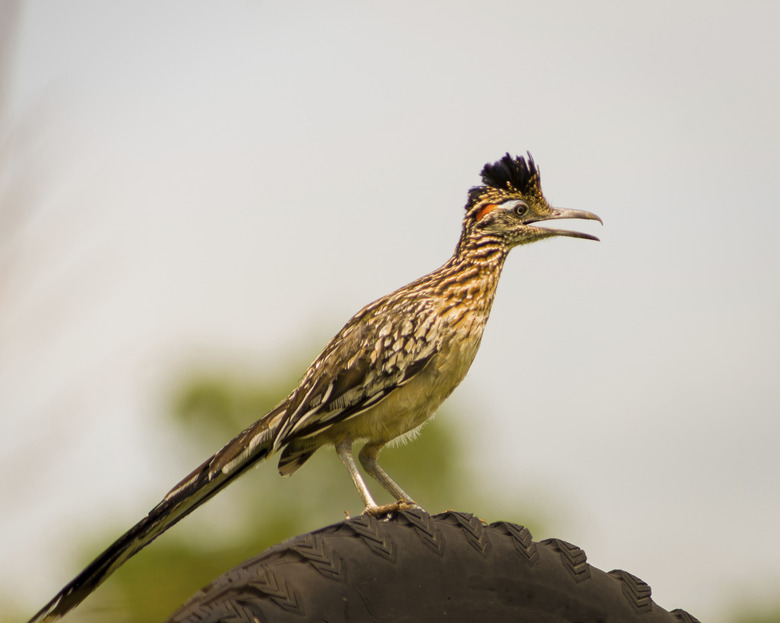Is There A Difference Between A Male And A Female Roadrunner?
People around the world know the mostly terrestrial cuckoo called the roadrunner in animated form courtesy of the iconic Warner Bros. Looney Tunes character the Road Runner, relentlessly outsmarting its ambitious but hapless predatory adversary, one Wile E. Coyote, against a desert backdrop.
That beloved cartoon only vaguely resembles the real, flesh-and-blood greater roadrunner, native to the southwestern and south-central U.S. and northern Mexico. While this large, flashy bird itself – a swift runner and mostly carnivorous forager that often hunts lizards, snakes, rodents and scorpions – is unlikely to be confused with any other in its range, telling male and female roadrunners apart is no easy task for the field observer, and often downright impossible.
Sexual Dimorphism – or Lack Thereof – in the Greater Roadrunner
Sexual
Dimorphism – or Lack Thereof – in the Greater Roadrunner
Many birds exhibit obvious contrasting physical characteristics between the sexes besides the sexual organs themselves, a phenomenon known as sexual dimorphism. The greater roadrunner is not such a bird: Males and females look extremely similar.
Both are roughly the same size, reaching about 23 inches from bill to tail, and both sport the same mottled brown and white plumage. Both have a ragged head crest of feathers variously held erect or flattened, and both have a naked patch of skin behind the eye – the postorbital apterium, if you want to get technical – often showing white, blue and orange-red.
In short, indisputably determining whether a roadrunner is male or female is really the realm of biologists who can scrutinize the gonads or conduct a particular polymerase chain reaction in the lab that's been shown to reliably reveal roadrunner sex.
Color Differences of the Eye Patch?
Color
Differences of the Eye Patch?
A 1976 study that looked at differentiating sex in a population of greater roadrunners in a Texas wildlife refuge suggested the area of the postorbital apterium just behind the roadrunner's eye tended to be white in males and blue in females.
However, the authors noted there were exceptions, and also that the sample size of a single roadrunner stock made extrapolating to the species in general a shaky proposition.
Behavioral Differences
Behavioral
Differences
All things considered, you're not likely to be able to gauge the sex of a single roadrunner you glimpse dashing across a desert flat. During the breeding season, however, when males and females come together to nest, you may at least have a bit more evidence to play around with.
Male and female roadrunners, which typically mate for life but spend the non-breeding season apart, both perform courtship displays ahead of nesting.
According to the National Audubon Society, the male often dashes away from the female with upraised wings and tail, which he will also often wag while bowing. Such romantic shenanigans may at least lead you to suspect which is which in a roadrunner pair, though both sexes will chase one another while courting so this might be an overly subtle clue.
The Cornell Lab of Ornithology on its All About Birds website suggests male roadrunners bring twigs to their mates, which actually build the nest, typically located on a branch or in the nook of a shrub or cactus fairly close to the ground. Thus a roadrunner you see harvesting and transporting twigs may well be a "he."
Both male and female roadrunners take turns incubating the two to six eggs the female lays, meanwhile, so the sight of a bird on a nest isn't diagnostic of its sex.
Using Greater Roadrunner Sound to Identify Sex
Using
Greater Roadrunner Sound to Identify Sex
The breeding season also opens up the possibility of narrowing down roadrunner sex by vocalizations. Male greater roadrunners issue a soft, descending series of coos, often from a prominent vantage, to communicate with mates (or potential mates) and stake out territories.
When courting up-close, the male will also make dry, ratchety noises. The Cornell Lab of Ornithology, meanwhile, describes a "whining" sound sometimes made by a female roadrunner waiting impatiently for a male to bring her building material for their nest.
Other roadrunner calls, including individual coos and barks, are made by both sexes.
Cite This Article
MLA
Shaw, Ethan. "Is There A Difference Between A Male And A Female Roadrunner?" sciencing.com, https://www.sciencing.com/there-between-male-female-roadrunner-8315477/. 8 July 2019.
APA
Shaw, Ethan. (2019, July 8). Is There A Difference Between A Male And A Female Roadrunner?. sciencing.com. Retrieved from https://www.sciencing.com/there-between-male-female-roadrunner-8315477/
Chicago
Shaw, Ethan. Is There A Difference Between A Male And A Female Roadrunner? last modified March 24, 2022. https://www.sciencing.com/there-between-male-female-roadrunner-8315477/
